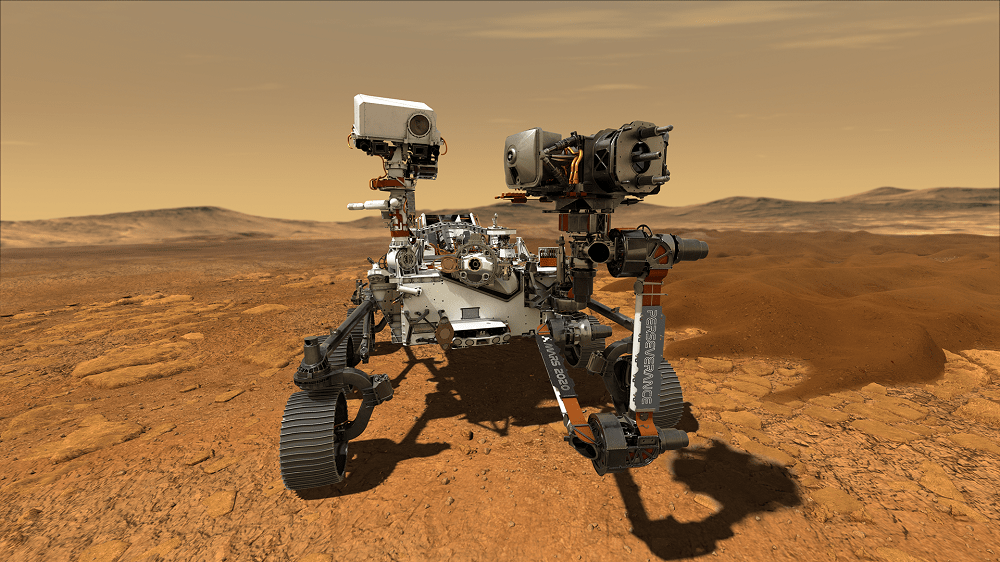



Mars 2020 is a Mars rover mission by NASA’s Mars Exploration Program that includes the rover Perseverance and the small robotic helicopter Ingenuity. Mars 2020 was launched from Earth on 30 July 2020, and confirmation of touch down in Jezero crater on Mars was received on 18 February 2021. The mission’s goals are to search for evidence of past life and habitable environments in Jezero crater and collect and store samples that, for the first time in history, could be returned to Earth by a future mission.
NASA used remote sensing technology to decide between thirty potential landing sites for the Mars Perseverance Rover Mission, which is launching in July 2020. After intense scrutiny of the sites, they decided to select Jezero, a 49 km crater in the Syrtis Major quadrangle on Mars, as the landing site.
The Mars Reconnaissance Orbiter (MRO) has been relaying high resolution imagery to scientists on Earth since 2006. Sensors on the MRO record reflected radiation in the visible and infrared portion of the spectrum. With the use of computer programs, scientists can discern things like the mineral compositions of rocks, the presence of water, and temperature differences based on the spectral response of these materials. Some scientists have used this technology to find clues to potential life on the red planet, such as silicates (Tarnas, 2019) and carbonates (Horgan, 2019). Others have looked at geomorphology of landforms on Mars, such as the delta on the west side of Jezero Crater, in order to study the clay minerals present for their potential to preserve organic compounds (Ehlmann, 2008). All of this work was done mainly with two instruments on the MRO, the Compact Reconnaissance Imaging Spectrometer (CRISM) (Murchie, 2008) and the High Resolution Imaging Science Experiment (HiRISE) (McEwen, 2007). Another instrument, the Context Camera, or CXT, takes images intended to be used as a background for information gathered by the other two instruments (Malin, 2007).

This project compares attributes of three of the final contenders for the Perseverance/Mars 2020 landing site and shows how the data acquired by the remote sensing equipment aboard the MRO helped make the final decision.
The landing site for Perseverance had to fit four main criteria:
Remote sensing technology has made it possible for us to visit planets in our solar system without ever setting foot on them. The resolution of the instruments on the MRO is so fine that the resulting images from CRISM and HiRISE can be seen as works of art.

The top three sites were Northeast Syrtis, Jezero, and Midway. All three of these sites had a lot of benefits for the mission, and if it hadn’t been for the detail of the information scientists were able to get from remote sensing, the decision might not have been a very clear one. All had characteristics that would fulfill the four objectives discussed earlier. The major thing that detracted from the value of Midway and Northeast Syrtis were some uncertainties of the origins of some of the minerals at those sites, and how well those minerals would preserve organic matter. Jezero Crater was ultimately chosen as the landing site. It has scientific characteristics and points of interest pertinent to the mission objectives, as well as terrain on which it would be safe for the rover to land and operate, increasing the probability of mission success.
Perseverance Rover Location: This interactive map shows the landing site for NASA’s Perseverance rover within Jezero Crater. Perseverance landed on Feb. 18, 2021.
Source: Remote Sensing and the Mars Perseverance Rover, Melanie Meadors